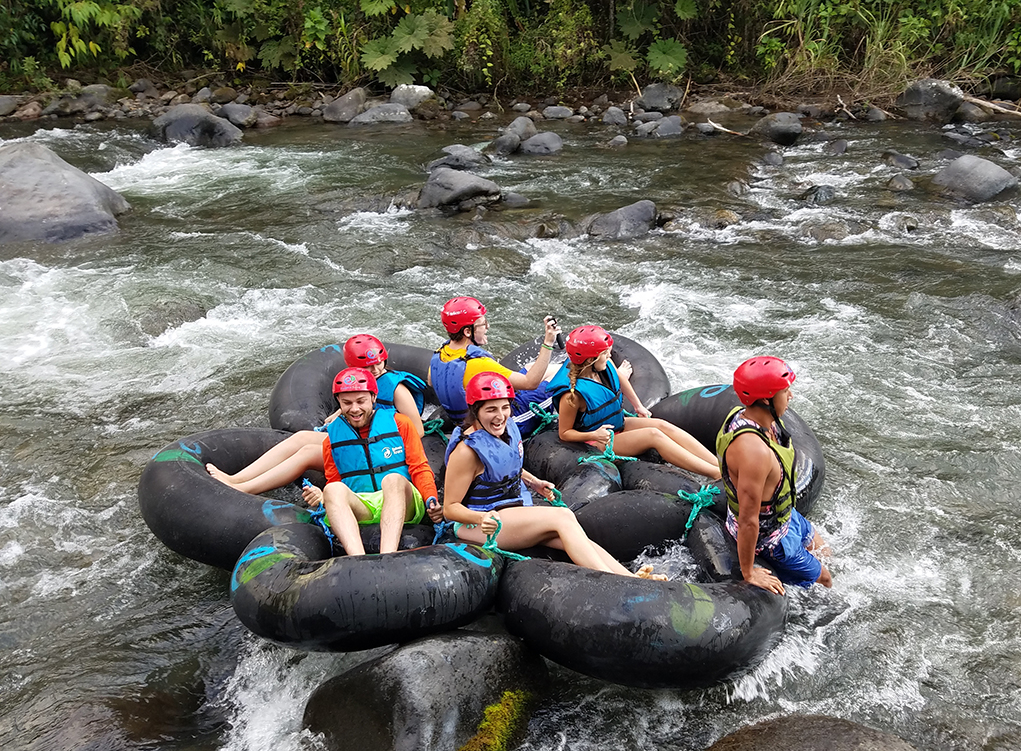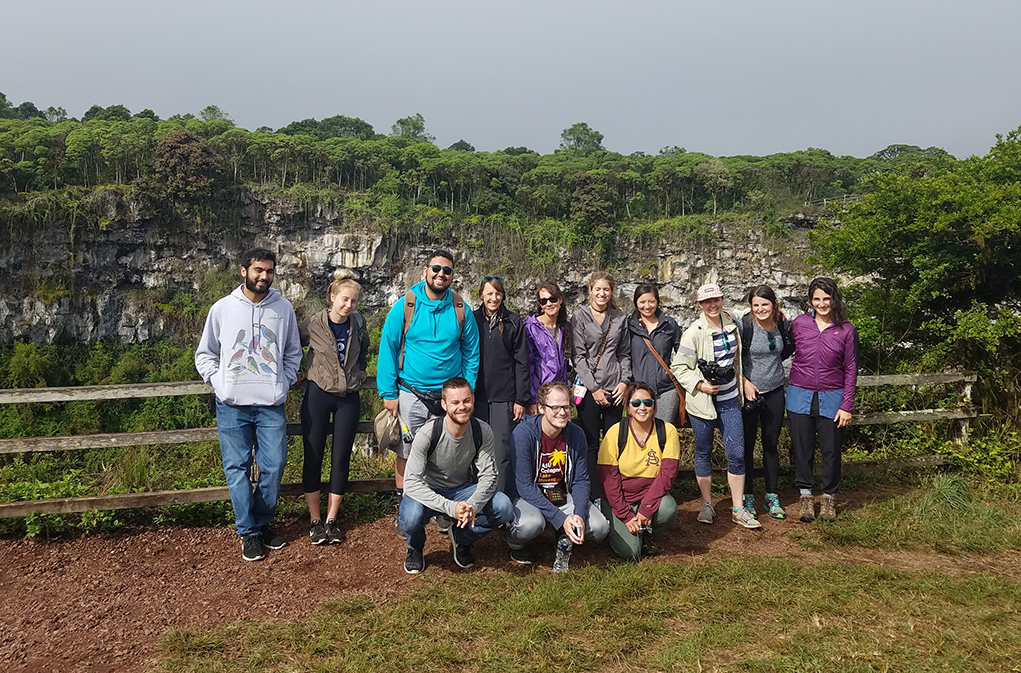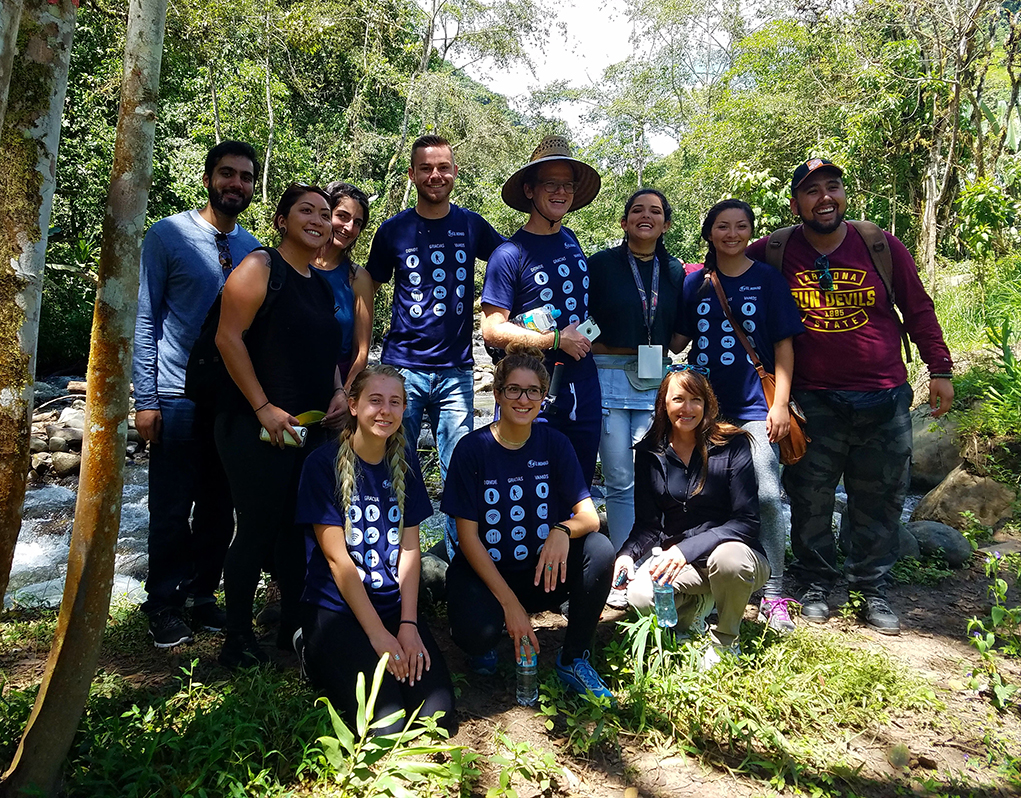College is more than just broadening your education; it is broadening your horizons. From July 8 to 23, ASU Colleges at Lake Havasu City professors and a student set out on the adventure of a lifetime to the tropics of Ecuador and the Galapagos Islands.
Student Ryan Hernon, and professors Dr. Sharon Harvey, Department of General Studies, and Dr. Kerrie-Anne Loyd, Department of Life and Environmental Sciences, spent two weeks exploring the South American country through ASU’s study abroad program, “Conservation Biology and Ecological Sustainability.”
The first portion of the trip was spent in the towns of Quito and Mindo, with stops in Bella Vista and Rio Alambi. The nine total students and faculty toured a cloud reserve, hiked along rainforest trails, and visited a hummingbird sanctuary. The group surrounded itself with the flying beauties of a butterfly farm, learned the operations of both a hummingbird and an insect reserve, and explored a cocoa factory.
To top it off, the group ziplined over canopies and the distant city-scape of Mindo. As if flying is not daring enough, the group repelled down waterfalls reaching 120 feet in height.
“I was here to do stuff out of my norms. … I was here to experience life.” recalls Hernon.
Next, the explorers traveled from Mindo through Tena, St. San Pablo, Mitad del Mundo and into the jungle of the Amazon. Traveling by boat, they stayed four days and nights in the jungle of the Amazon.
“I’ve never seen so many bugs bigger than my hand” explains Hernon.
Rooms without running water and electricity made the visitors truly relate to the more primitive lifestyles of the Ecuadorians.
“At night, it sounded like an insect haven. The nightly chorus was challenging for some” confesses Harvey, “You see how determined and resilient you are.”
Upon visiting a wildlife refuge, Hernon became so inspired, he remains in contact with the possibility of someday returning to do volunteer work with the refuge.
With two boat rides, the ASU students and faculty journeyed to the land of the native Quechua tribe where they learned how to blow darts through wooden chutes, make native-style clay pottery, and have a culture discussion with president of the village, Ahauna.
“This was my favorite part of the trip” confesses Harvey.
The trip came to its final turn with the Galapagos Islands, staying on the islands of San Cristobal and Santa Cruz. Here, science and history met with a visit to the Charles Darwin Center. The students observed the biological wonders of sea lions, iguanas, sea turtles and the famed Blue-footed Boobie bird.
Before departing back to the States, the ASU family got the pleasure of venturing through the largest indigenous market of South America, the Otavalo.
“The market represented cultures like Spain, Peru and Ecuador to name a few” Harvey said.
Of course, Hernon said the best way to really know a culture is the food. Throughout the trip, the group tried local delicacies like rice, beans, plantains, Ceviche (raw fish cooked with lemon), and Guinea Pig.
“We were here, so we had to try it all,” said Hernon.
For those with a traveling soul, Hernon recommends to “Jump in and go for it – reading and documentaries don’t do it justice.”
Harvey adds, “Throw out normal expectations. You can’t expect the same lifestyle as home.”
The program provided housing, meals, transportation, excursions and international health insurance for $5,000 (not including airfare) as well as credits toward a student’s degrees.
This program is one of 85 offered by ASU during spring break and summer, including countries on all seven continents. In addition to enrolled students, community members are encouraged to attend and volunteer on the trips.
For more information on upcoming study abroad opportunities through ASU Havasu, please visit: https://mystudyabroad.asu.edu/























I loved reading about this adventure! Well written story.